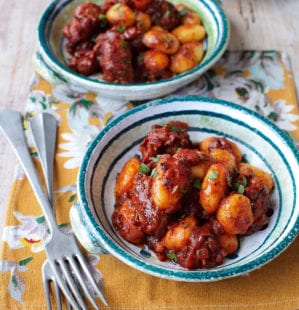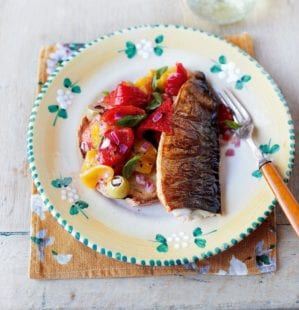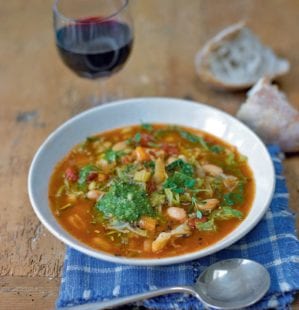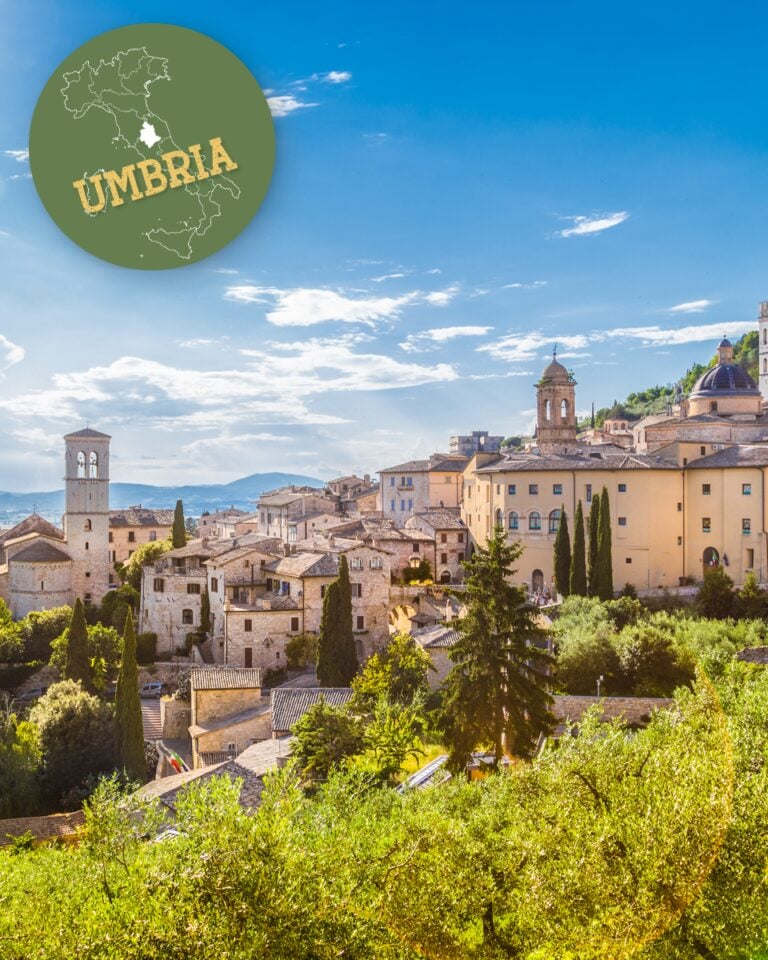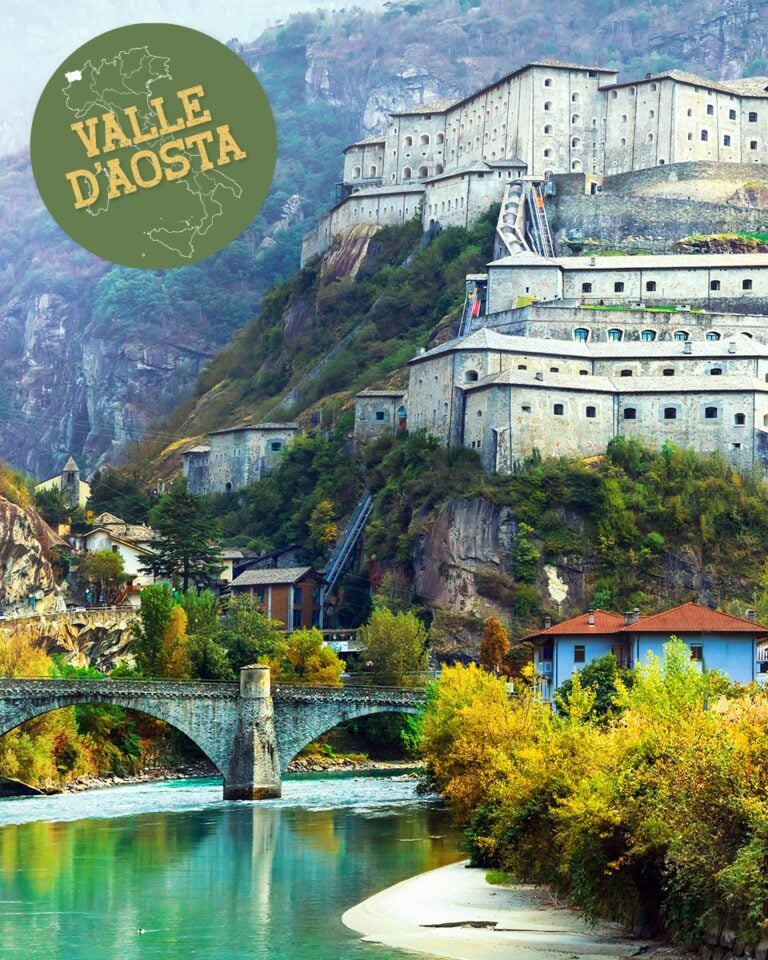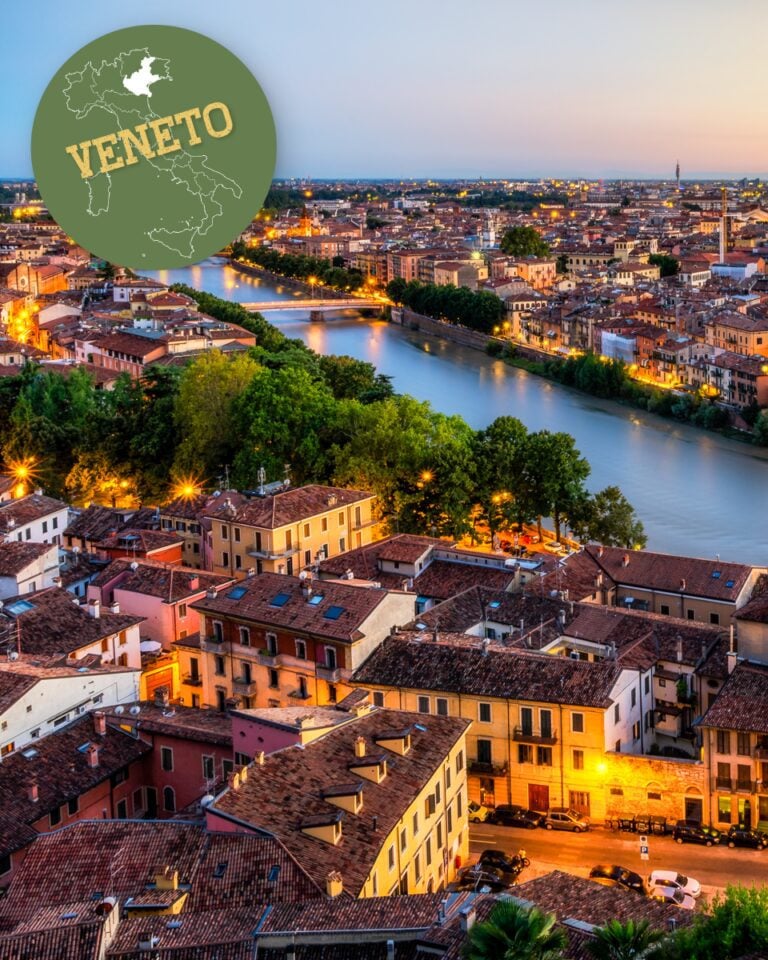Your essential food guide to Tuscany
Discover the food, drink and dishes Tuscany is best known for with our food lover’s guide to the region. We explore which cheeses and wines come from Tuscany, along with plenty of other foods typical of the area and Tuscan cuisine.
In terms of its cuisine, Tuscany offers a bit of everything. There’s a huge influence from the local cucina povera, with stale bread, chestnuts and beans finding their way into many a dish, but plenty of luxury from the big cities too – huge cuts of beef, wild game, fresh egg pasta and sweets filled with dried fruit and spices.
Scroll on (or use the menu below) for a taste of everything that makes the food of Tuscany so special.
Take a food lover’s tour of all 20 Italian regions with delicious. No flights necessary!
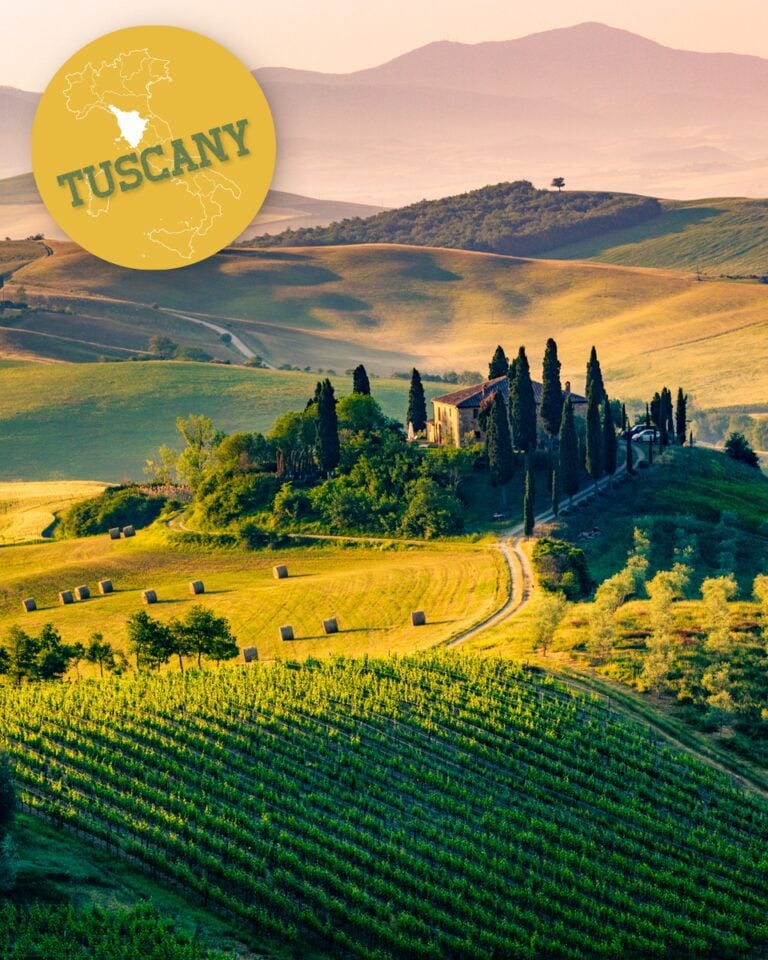
- The must-make recipe from Tuscany
- What are the traditional ingredients in Tuscany?
- What are the famous dishes from Tuscany?
- The best cheeses to try from Tuscany
- The best wines to try from Tuscany
- The delicious. team’s top food experiences in Tuscany
Get to know the food of Tuscany
The rolling hills, lush vineyards, expanses of forests and historic cities of Tuscany are among the most iconic images of Italy. It’s the second most visited region (after Veneto, thanks almost entirely to Venice), with the Renaissance cities of Florence, Siena and Pisa drawing tourists from far and wide. There are mountains, too, and a coastline to the west – it’s this diversity that makes Tuscany such a beautiful place to go to.
You’ll find hearty stews, reminiscent of the north of the country, served alongside lighter, tomato-based dishes that could quite easily come from a southern Italian region. The result is a cross-section of Italian food which no other region quite manages in the same way.
Cheese and salumi, surprisingly, don’t play as big a part in the local cooking as in other regions, and its famous unsalted bread is treated like a cooking ingredient rather than something ready to eat. It’s refreshing to find a regional Italian cuisine that both sets itself apart and contains influences from all over, which is why Tuscany is a fantastic base to get to grips with the sheer breadth of the country’s food. The wine’s not bad either.
Our hero recipe from Tuscany
 Panzanella by Dara Kein, head chef of Tiella at The Compton Arms pub
Panzanella by Dara Kein, head chef of Tiella at The Compton Arms pub
“Panzanella is a much loved staple in Tuscany, making use of old hardy bread that’s come to the end of its life. A zero-waste staple that’s become synonymous with the cuisine of the region, it also makes the most of late summer produce. It’s one of my favourite salads, mainly due to the bread’s ability to soak up all the various flavours of the dish. It’s fantastic accompanied with cheese like mozzarella on the side.”
Dara is the chef of Tiella, which has a residency at the Compton Arms pub in north London until Christmas. Rustic Italian food is the focus, with hearty hand-rolled pastas and succulent braised meats. The restaurant is an ode to Dara’s mother, Maria Pia de Razza-Klein, who is a renowned chef in Italy and New Zealand, as well as a nostalgic homage to Dara’s Italian childhood.
 Cook Dara’s panzanella
Cook Dara’s panzanella
What are the traditional ingredients in Tuscany?
- Beans Tuscans are known as mangiafagioli (bean-eaters) for a reason – they consume more of the legumes than anyone else in Italy. Cannellini beans are the most common, but there are dozens of other varieties, many of them native to the area. They’re a common side dish, often cooked simply with a few herbs, or used to bulk out soups and stews.
- Meat Beef is king in Tuscany, although pork and (in the south of the region) lamb get a good look-in too. Chianina (which has been domesticated for over 2,000 years) and Maremmana cattle are the local breeds of note, famed for their flavour and usually cooked as huge steaks or braised in rich red wine stews.
- Game Being covered in forests means a higher than average amount of game is eaten in Tuscany. Wild boar, rabbit, duck and pheasant are regularly cooked into ragùs and served with the local pappardelle pasta, or braised until unctuous.
- Chestnuts Traditionally an important source of calories in hard times, chestnuts grow all over the more mountainous regions of Tuscany and there are dozens of festivals held in the autumn when they’re ready to harvest. Often ground into a flour, they find their way into breads, cakes, gnocchi and pasta – no wonder they were known as ‘tree bread’ or ‘bread of the poor’ in the past.
- Pasta Pappardelle (a slightly wider version of tagliatelle) is Tuscany’s most famous pasta, perfect for serving with the region’s meaty game ragùs. There’s also pici, a hand-rolled, irregular, rustic shape that’s like very fat strands of spaghetti. The filled pasta tortelli is also popular, especially stuffed with potatoes.
- Bread Tuscan bread on its own is a bit… flavourless. That’s because it’s traditionally baked without salt. There are lots of reasons (or legends) why, ranging from a salt trade ban in twelfth-century Florence to the fact that bread was always eaten with salty dishes. Despite this lack of salt, however, bread plays a hugely important part in the local cuisine, being incorporated into many dishes.
- Cavolo nero This brassica is widely available in supermarkets these days, but it originated in Tuscany (it’s also known as Tuscan kale). It’s a key ingredient in many of the region’s rustic zuppa (thick, chunky soups).
Festivals are held in the autumn to celebrate chestnuts, they're that popular in Tuscany!
What are the famous dishes from Tuscany?
- Panzanella Stale bread is a key ingredient in Tuscan cooking, and this tomato, vegetable and bread salad is one of the region’s most famous dishes. The stale bread is soaked in oil and vinegar to soften it, before being tossed with the remaining ingredients.
- Pappa al pomodoro The second stale bread dish in the Tuscan canon, this thick soup of tomatoes thickened with bread is flavoured with nothing more than olive oil, garlic and basil. It’s sturdy enough to almost be a paste, and is served either warm or chilled, depending on the time of year.
- Ribollita The final bread-based dish of note is a chunky soup (almost a stew) of Tuscany’s greatest hits: bread, beans and cavolo nero. There are lots of different variations, often using up whatever’s available, but the chunks of bread in the dish provide plenty of sustenance, softening in the broth.
- Bistecca alla fiorentina One of the most famous steak dishes in the world, these huge slabs of T-bone steak are one of Florence’s biggest culinary draws, cooked over glowing embers by seriously skilled chefs who specialise in the single dish.
- Crostini neri A popular antipasto or starter, these thin slices of toasted bread are spread with chicken liver pâté, which is often flavoured with anchovies, vin santo (a local sweet wine) and capers.
- Malfatti These irregular-shaped little dumplings (the name means badly made) are made with ricotta and spinach and bound together with a little egg and flour. They’re then boiled until bouncy and light, then usually served in a tomato sauce or drizzled with sage-infused butter (also called gnudi).
- Torta della nonna A Tuscan custard tart that’s lightly scented with citrus zest, completely covered in pastry and topped with pine nuts. It’s prevalent throughout Italy and traditionally served on Sundays after a family meal.

The best cheeses to try from Tuscany
Pecorino toscano is the most famous of the region’s cheeses, made from sheep’s milk and served with salumi and jams or used in cooking, but there are lots of other pecorinos produced throughout the region. In the more mountainous areas there are goat’s cheeses, and caciotta – a cheese found throughout Italy and made with different milks – originated in the region.
The best wines to try from Tuscany
Where to begin? Tuscan wines are among the most famous in the world. Chianti is the star, but there are other red wines known collectively as ‘Super Tuscans’ which sit outside the more traditional styles of Italian winemaking and are very highly regarded. Tignanello, the first Super Tuscan, is so popular that the entire supply is snapped up in days after it’s produced each year. Sangiovese is the grape of choice, finding its way into the majority of the region’s reds, but white wines are produced here too – mostly made from the trebbiano grape.
The delicious. team’s top experiences in Umbria
 Thea Everett, Deputy digital editor
Thea Everett, Deputy digital editor
“Visiting the Pinocchio outdoor museum aged seven. I will still never forgive my brother for breaking the nose off my souvenir pencil…”
 Adrienne Moyce, Publishing director
Adrienne Moyce, Publishing director
“Before I was married, we travelled through Europe and happened upon Florence. We found ourselves dining with a group of stonemasons from Naples – they were quite boisterous! The food was something I will never forget: traditionally served, course after course. I didn’t realise and kept finishing everything. It was sensational but I couldn’t move. I didn’t take part in the arm wrestling competition that ensued, but I was proud to say that my now-husband, Peter, won, which is why I married him!”
Subscribe to our magazine
Food stories, skills and tested recipes, straight to your door... Enjoy 5 issues for just £5 with our special introductory offer.
Subscribe
Unleash your inner chef
Looking for inspiration? Receive the latest recipes with our newsletter

